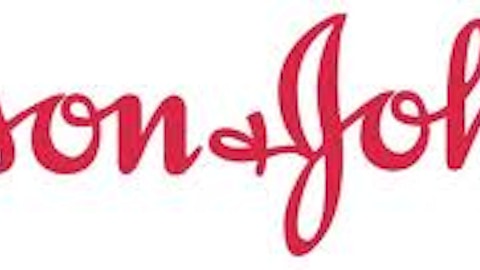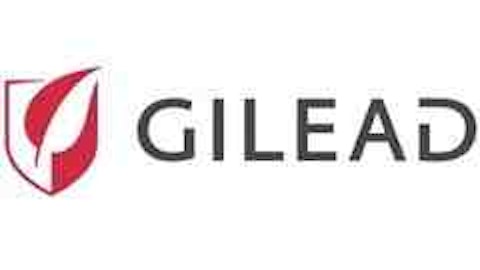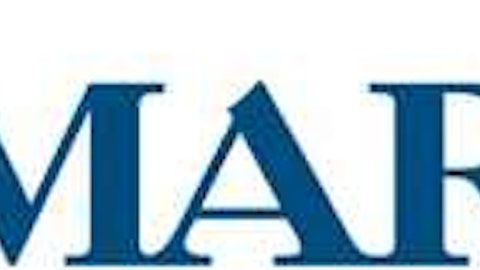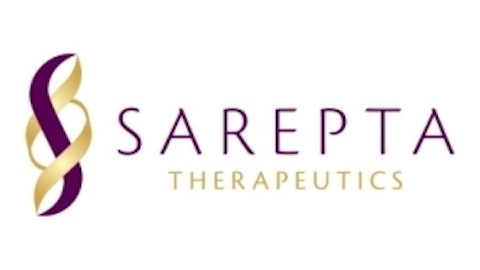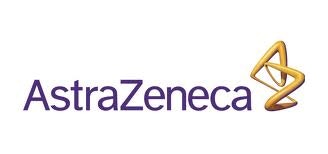
Last week we took a closer look at prostate cancer’s biggest players. This week I’ll be shifting the focus to the second most-common cancer type: breast cancer.
The skinny on breast cancer
Closely following prostate cancer is breast cancer, which is forecast to be diagnosed in nearly 235,000 people in 2013 — including more than 2,200 men! However, make no mistake about it, excluding for skin cancers, breast cancer is the most common cancer diagnosis that a woman is likely to receive.

Source: Centers for Disease Control and Prevention.
Like we saw with prostate cancer, five-year survival rates have been steadily rising for female breast cancer suffers. In 1975-1977, five-year survival rates were 75%, but have since improved to approximately 90% as 2002-2008 according to the American Cancer Society (link opens PDF). Part of this improvement can be attributed to better public awareness with regard to earlier detection, while other aspects, including better treatment options and a reduction in the use menopausal hormone therapy, which was discovered to contribute to cancer-causing risk, have played their part.
The treatment options for those with breast cancer will vary based on the stage of the disease, but most often involves either breast-conserving surgery or mastectomy (removal of the entire breast). Numerous studies have shown that breast-conserving surgery when combined with radiation compares just as favorably as a mastectomy in terms of long-term survival, but again, each case will vary. Additional treatments may include chemotherapy, hormone therapy, or radiation therapy.
Where investment dollars are headed
Unlike prostate cancer, breast cancer has a number of players in both the early stages and late stages of the disease. Let’s first examine some of the early stage breast cancer players in post-menopausal women.
By far, the most common treatment pathway in early stage breast cancer is through hormonal therapy (assuming the tumor is hormone-receptor positive). This occurs by reducing estrogen production through the use of aromatase inhibitors or blocking the effects of estrogen on cancerous cells with selective estrogen receptor modulators, or SERMs. With a definitive link between estrogen production and cancer cell growth, these treatments revolve specifically around estrogen reduction or suppression.
Aromatase inhibitors: Many aromatase inhibitors have been around for the better part of a decade or longer, so most have come off patent, including Arimidex by AstraZeneca plc (ADR) (NYSE:AZN) and Femara by Novartis AG (ADR) (NYSE:NVS). Both drugs work by temporarily blocking the activity of the aromatase enzyme, which the body uses in order to make estrogen. Aromasin — another aromatase inhibitor made by Pfizer Inc. (NYSE:PFE), which saw its patent expire in 2006 — inactivates the enzyme on a permanent basis.
SERMs: Another way of reducing estrogen’s impact on the body is by creating drugs which bind to estrogen receptors. AstraZeneca plc (ADR) (NYSE:AZN)’s Nolvadex, for example, can act as both an agonist and an antagonist in that it suppresses estrogen’s effects in the breast but can mimic its effects in other parts of the body such as the uterus. Like the above players, Nolvadex came off patent exclusivity a long time ago. Eli Lilly & Co. (NYSE:LLY)‘s Evista, which is protected by patent through 2014, is another SERM, although it’s primarily prescribed for more invasive types of breast cancer that have invaded surrounding tissues.
All told, it’s quite common for early stage breast cancer suffers to be prescribed either Nolvadex or some combination of an aromatase inhibitor and a SERM.
As you might have guessed, there’s also quite a bit of research and money going on into late-stage/metastatic breast cancer. Let’s have a look at some of the most common advanced-stage treatments.
Herceptin: This is Roche Holding Ltd. (ADR) (PINK:RHHBY)‘s wonder drug, approved in 1998 for patients with HER2-positive metastatic breast cancer and responsible for $4.8 billion in global sales in 2011. As you probably inferred, Herceptin targets the HER2 protein by suppressing it and giving standard chemotherapy a chance to be effective. In addition to being approved for metastatic breast cancer, Herceptin gained an additional indication in 2006 for early stage breast cancer following a primary treatment for HER2-positive patients.
Tykerb & Xeloda: In 2007, advanced stage breast cancer suffers got an additional treatment option with the combination of GlaxoSmithKline plc (ADR) (NYSE:GSK)‘s Tykerb and Roche’s Xeloda. The combo was approved as a secondary treatment to be used after patients have tried Herceptin, a taxane, and an anthracycline. Unlike Herceptin, according to the FDA’s press release in 2007, Tykerb is a small molecule able to enter the cancer cell and upset its functionality from within rather than attacking the HER2 protein parts on the outside of the cell as Herceptin does. It’s worth noting, however, that Herceptin sales continue to dominate that of the Tykerb and Xeloda combination.
